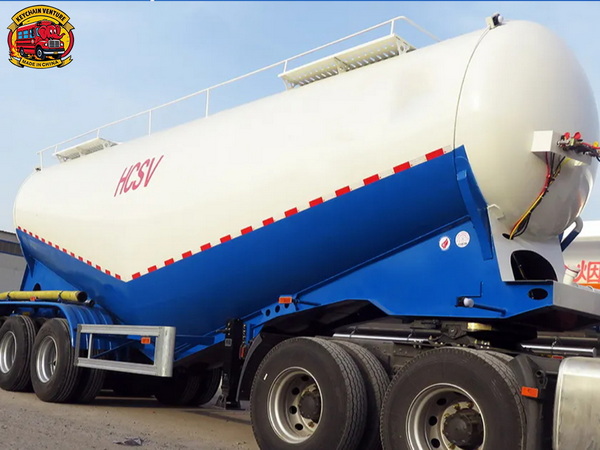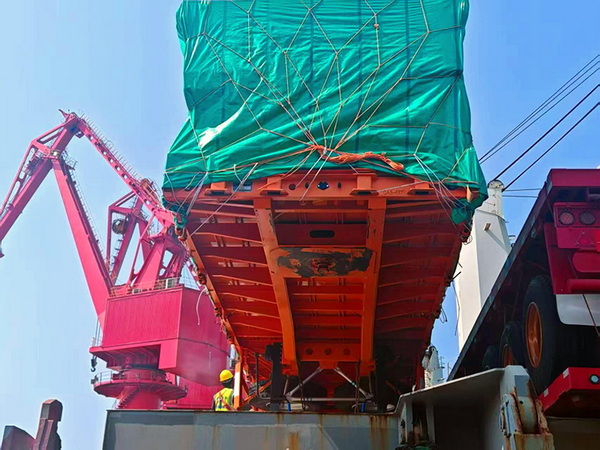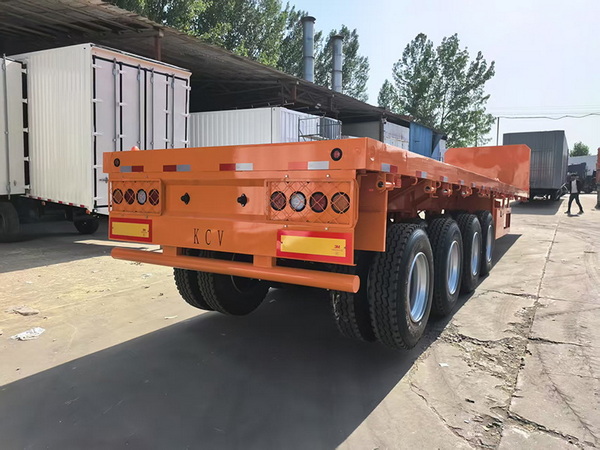Views: 222 Author: Amanda Publish Time: 2025-10-28 Origin: Site








Content Menu
● Typical Lengths of Semi Trailers
● Why Semi Trailer Length Matters
>> Legal and Regulatory Impact
● International Differences in Semi Trailer Sizes
● Types of Semi Trailers and Their Typical Sizes
>> Refrigerated Trailers (Reefers)
● Innovative Features and Trends in Semi Trailer Design
● Safety and Training for Longer Semi Trailers
● Market Applications and Real-World Scenarios
>> E-Commerce and Retail Distribution
>> Heavy Industry and Manufacturing
● Future Trends in Semi Trailer Innovations
● FAQs
>> 1. How is semi trailer length measured?
>> 2. Are longer semi trailers harder to drive?
>> 3. Do regulations differ by country?
>> 4. What types of cargo benefit from longer semi trailers?
>> 5. Can semi trailers be customized in length?
Semi trailers are essential vehicles in the commercial trucking industry, transporting goods of all types across vast distances. For logistics professionals, fleet managers, and shippers, understanding standard semi trailer dimensions is crucial for optimizing freight transport, route planning, and regulatory compliance. This article explores the core aspects of semi trailer sizes—especially their length—the impact on cargo capacity and safety, regional differences, design innovations, and more, providing key information for anyone working with commercial vehicles.

A semi trailer is a large, heavy-duty cargo carrier that relies on a tractor unit to move, making it distinct from self-propelled vehicles. Its design maximizes cargo space and enables efficient transport, making semi trailers a backbone of global distribution networks. Styles include dry vans, reefers, flatbeds, and specialized models, each suited to particular freight needs.
The most common question about these vehicles concerns their length. A “typical” semi trailer varies by region and purpose:
- 53 feet (16.15 meters): The standard in North America. Offers maximal space for diversified freight and is fully compliant with interstate transport laws.
- 48 feet (14.63 meters): Also popular, especially for older fleets and specific applications where maneuverability is a higher priority than maximum cargo volume.
- 44.6 feet (13.6 meters): Standard in Europe due to stricter regulations and infrastructure constraints.
- Custom lengths: Some regions, like Australia and parts of Asia, permit longer or shorter models through special permits or for unique logistics scenarios.
The length determines volume and the number of standard pallets a trailer can hold. For instance, a 53-foot semi trailer can typically accommodate up to 26 pallets, optimizing freight efficiency especially for bulk shipments.
Longer trailers provide impressive capacity but challenge drivers in urban settings, tight depots, and narrow access roads. Route planning must take these challenges into account, especially in areas with limited clearance or loading dock space.
Countries limit trailer length to ensure safety, protect infrastructure, and smooth traffic flow. Regulatory bodies such as the US DOT, European transport commissions, or local ministries publish precise guidelines for legal dimensions, axle limits, and total loaded weight.
Semi trailer size standards vary globally, shaped by infrastructure, safety, and commerce:
- North America: 53 feet is generally accepted, including most US interstate and Canadian routes.
- Europe: Strict limit of 13.6 meters (44.6 feet) due to compact roadways or historical standards.
- China: Both 13-meter and 15-meter models in use, with flexibility for industrial logistics and export shipments.
- Australia: Allows “road trains,” sometimes with trailers exceeding 60 meters overall, mainly for remote highway use.
Regional differences in allowable length affect trailer selection, routing, and even the method of loading and unloading, making compliance a strategic concern for international shippers.

Semi trailers come in several primary types, each with unique length, function, and loading style:
A dry van is the classic, enclosed box trailer found in retail, food and consumer goods logistics.
- Typical length: 53 feet in the US, 13.6 meters in Europe.
- Capacity: About 3,500-4,000 cubic feet of cargo space.
- Used for palletized goods, boxed freight, and items needing weather protection.
Designed for temperature-sensitive freight, reefers keep food, pharmaceuticals, and perishables cold in transit.
- Length: Often 48-53 feet; some markets use specialized sizes.
- Refrigeration units: Mounted on the trailer body for precise climate control.
Flatbeds provide maximum loading flexibility for large, heavy, or irregular cargo items such as construction materials or machinery.
- Length: Typically 48-53 feet.
- Features: Open deck allows forklift access and easy tie-down.
Certain industries need custom semi trailers for oversized, heavy, or unique shipments:
- Lowboys: Lower deck height, essential for large equipment but typically shorter overall.
- Auto carriers: Longer multiple-level decks; lengths vary by vehicle count.
- Extendable trailers: Adjustable for particular payloads, used in construction or special projects.
Modern semi trailers are evolving rapidly. Cutting-edge features include:
- Lightweight materials: Aluminum and composites reduce trailer weight, increasing payload.
- Aerodynamic designs: Streamlined shapes and side skirts boost fuel efficiency.
- Telematics: Digital tracking for compliance, route optimization, and predictive maintenance.
Manufacturers, including KeyChain Venture Co., Ltd., invest in R&D to keep pace with evolving market demands and regulatory changes, adding value for both domestic and international clients.
Adhering to local, national, and international regulations is vital for safe, efficient operation. Key points:
- Axle spacing: Dictates distribution of weight and trailer stability.
- Maximum Gross Vehicle Weight Rating (GVWR): Established per semi trailer type and regional guidelines.
- Inspection and compliance: Authorities routinely assess trailer size and load for roadworthiness.
Regulatory violations lead to penalties, impoundment, or business delays—making compliance essential for all fleet managers.
Longer trailers present special challenges for drivers. Road safety demands:
- Enhanced training in cornering, backing up, and highway merging.
- Regular inspections for tires, axles, and locking mechanisms.
- Defensive driving, especially with oversized or heavy cargo.
Many logistics companies require certified training and periodic skill upgrades for operators of long semi trailers to prevent accidents and ensure cargo integrity.
Retail and e-commerce leaders deploy semi trailers for just-in-time stocking and warehouse-to-store deliveries. The standardized size streamlines process efficiency, order accuracy, and customer satisfaction.
Manufacturers leverage flatbeds and custom semi trailers for equipment, raw materials, and finished goods—tailoring trailer selection to shipment requirements and legal road limits.
Refrigerated semi trailers enable large-scale distribution of produce, meat, dairy, and pharmaceutics across changing climates and long distances, supporting robust perishable supply chains.
As the logistics landscape evolves, semi trailers continue to advance:
- Autonomous trucks and smart trailer connections for safer, more efficient operation.
- Electrification, reducing emissions and complying with new environmental standards.
- Customization of length and modular features for specialized transport needs.
Companies seek to maximize efficiency while adapting to global demands, regulatory shifts, and technological innovations—ensuring semi trailers remain central to supply chain strategy.
Semi trailers' typical length—most commonly 53 feet in North America and 13.6 meters in Europe—is a critical specification affecting cargo capacity, safety, maneuverability, and regulatory compliance worldwide. Choosing the right semi trailer size means balancing operational demands, route requirements, and legal constraints while tracking industry trends. Innovations in design, lightweight construction, and digital integration are shaping the future, promising greater efficiency and flexibility. For suppliers, fleet operators, and logistics coordinators, understanding semi trailer length is vital to success in today's global marketplace.

It is measured from the front bulkhead or kingpin to the rear doors, excluding the tractor. This method aligns with most regulatory standards internationally.
Yes. Longer trailers need additional space for turning, careful navigation in tight spaces, and more driver training for safety in various conditions.
Absolutely. The US generally allows 53-foot trailers, while Europe limits trailers to 13.6 meters, and other countries set their own lengths to suit road infrastructure and safety considerations.
Large-volume, non-perishable goods such as retail products, cargo in pallets, and boxed freight are best suited for longer trailers, maximizing shipment efficiency.
Yes. Manufacturers—including KeyChain Venture Co., Ltd.—provide custom solutions tailored to operational needs and legal limits, ensuring optimal cargo handling.